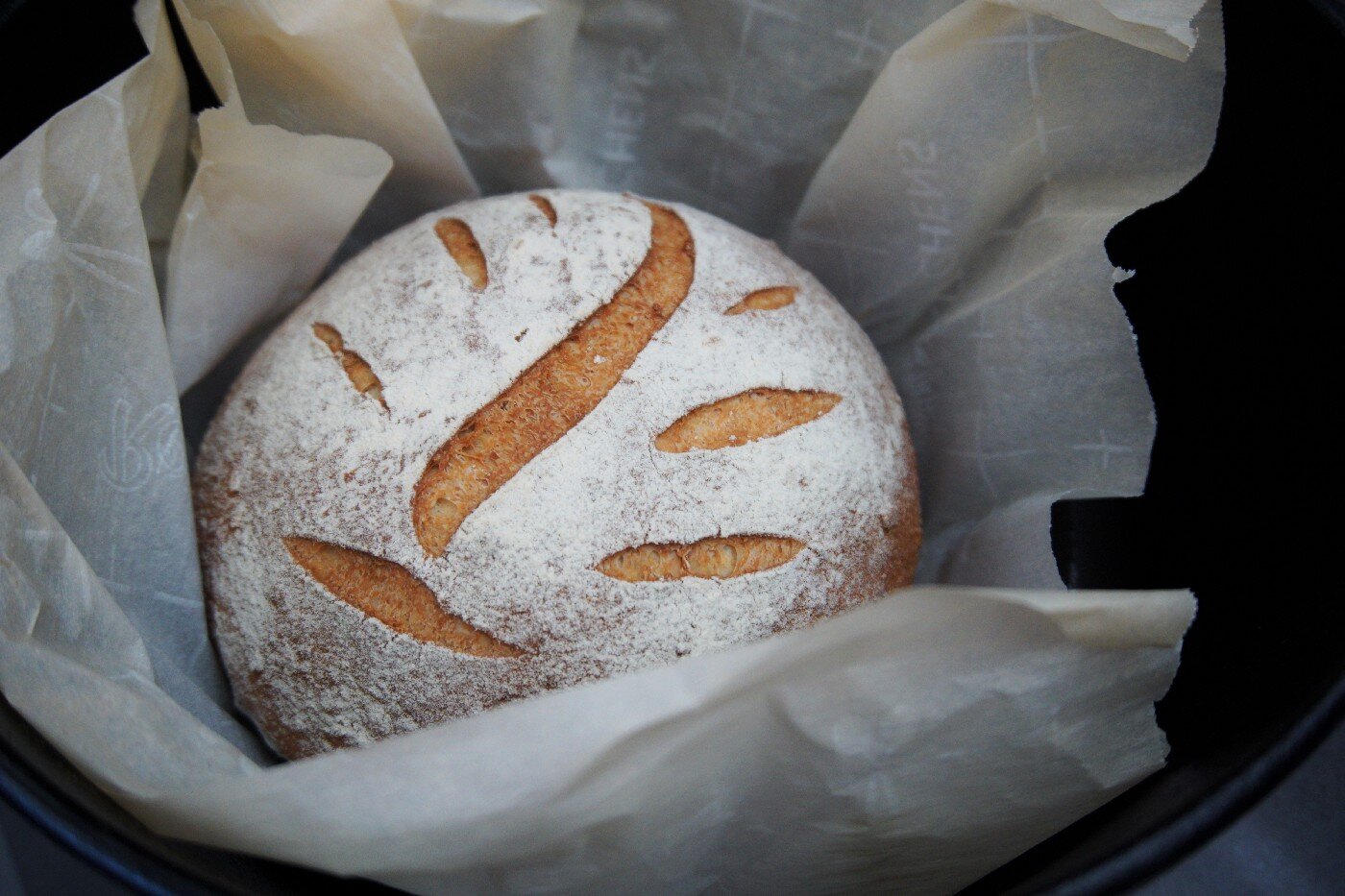Some months ago, a friend hugged me and said, “Oh, you smell so good.” I wear no perfume and use nothing scented, so I couldn’t imagine a reason for the compliment. But my youngest daughter was standing next to me and said, “You smell like freshly-baked bread. It’s how you always smell.” This was a revelation.
It’s true that baking sourdough bread has long been the through line of my cooking. I credit my love of bread and my commitment to baking it to a slice of family history. When I was growing up, my grandfather brought a loaf of fresh rye bread to our house every afternoon. It was an offering he left warm and beckoning on our Formica countertop, steaming in its paper wrapper, to welcome my siblings and me home from school.
I wonder if my long history of bread baking will give my own children happy associations like this to bring with them into their adult lives. I think it will. In fact, I asked my daughter, the one who said I smell like bread, and she confessed to keeping one of my old aprons in her closet. She said that after two years it still smells like me, like bread. Our kitchen, in fact the whole house, probably smells the same way, of warmth and sweetness and bread.
After years of baking, I still imagine my hands grasped in quiet joyful prayer with each loaf I take out of the oven. It’s the blessing of that moment, the serendipity of my grandfather’s daily bread and the love he gave with it, and the way it inspired one of my own enduring satisfactions. That I know how to maintain a starter and use that starter to bake bread still feels like a surprise, even now long after I have the confidence to believe I will always have a gift derived out of my own curiosity and hard work to share around my table.
These years I bake more deliberately than I once did, so I notice the way using sourdough continues to awaken a feeling in me — awe, I think — that reminds me there are lessons I want to keep learning. This is what I know so far. That practice matters. That quality counts. That you can taste shortcuts. That sourdough baking will gently chisel away at your ego so that the more skilled you become the more humility you feel. I also know that if you stay with it, sourdough baking will allow you to carry the aroma of bread and love from now into the days and years ahead.
Copyright, Ellen Arian, Ellen’s Food & Soul



